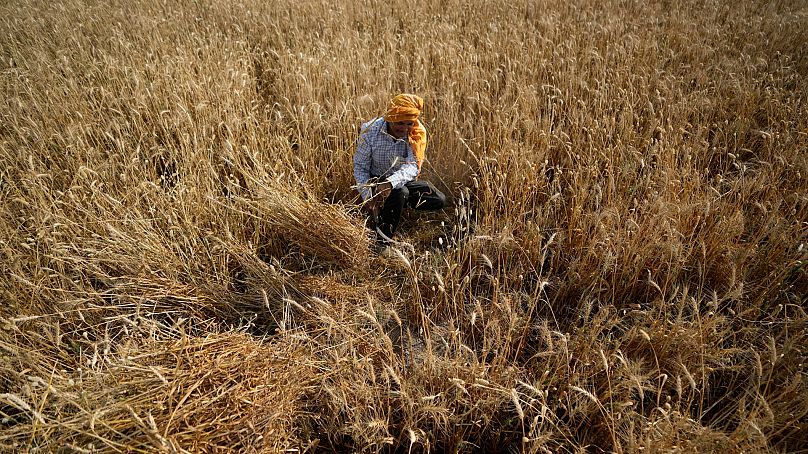India just recorded its hottest February in 120 years. What does that mean for spring and summer?
India is bracing for blistering heatwaves after recording its hottest February since 1901.
The country’s average temperature was 29.5 degrees Celsius last month - around 2 degrees higher than normal.
As spring approaches, the world’s second most populous country can expect little relief.
Most of the nation will experience an “enhanced probability” of high temperatures between March and May, India Meteorological Department’s (IMD) has warned.
"Above normal maximum temperatures are likely over most parts of northeast India, east and central India and some parts of northwest India", the agency said in a statement.
The agency issued its first heatwave warning of the year for the Kutch and Konkan regions - the earliest it has ever issued such a warning. The notice was later withdrawn after a cool sea breeze brought temperatures down.
The hot weather could push down wheat production and increase power demand. The federal government has set up a committee to monitor the threats posed by high temperatures.
What will the heatwave mean for Europe’s food supplies?
India is the world’s second biggest wheat producer.
Amidst unprecedented drought India’s government imposed a temporary ban on wheat exports. Combined with the war in Ukraine this pushed global prices up.
The EU produces much of its own wheat; In 2022, France and Germany produced half of the EU’s Wheat. French Wheat production reached 36.08 million metric tonnes in 2022, compared to 149.5 million metric tonnes total volume for the EU.
But even though Europe is not heavily reliant on India for wheat, heatwaves could put further pressure on the global food market and lead to increasing prices in the bloc.
When is the hottest time of year in India?
Hot springs are normal in India, with temperatures typically peaking in late June before the monsoon rain arrives.
But global heating is pushing temperatures to extremes.
Indians suffered through a brutal heatwave between March and April last year. The subcontinent recorded its hottest and driest March in 120 years, with temperatures soaring up to 8 degrees higher than average.
The country experienced more than 200 days of heatwaves in the early summer season of 2022 - five times what it experienced during the same period in 2021.
The high temperatures can be a death sentence for many of the country’s poorest people.
At least 2,081 people died during a heatwave in 2015, the country’s worst since 1992.
Neighbouring Pakistan also suffered record breaking temperatures, with regions nearing 50 degrees celsius.
Does climate change make heatwaves more likely?
Climate change made India and Pakistan’s spring heatwave at least 30 times as likely, according to the World Weather Attribution initiative.
This trend is replicated worldwide.
At 1.5 degrees Celsius warming above pre-industrial averages, about 14 per cent of Earth's population will be exposed to severe heatwaves at least once every five years, while at 2 degrees warming that number jumps to 37 percent.












